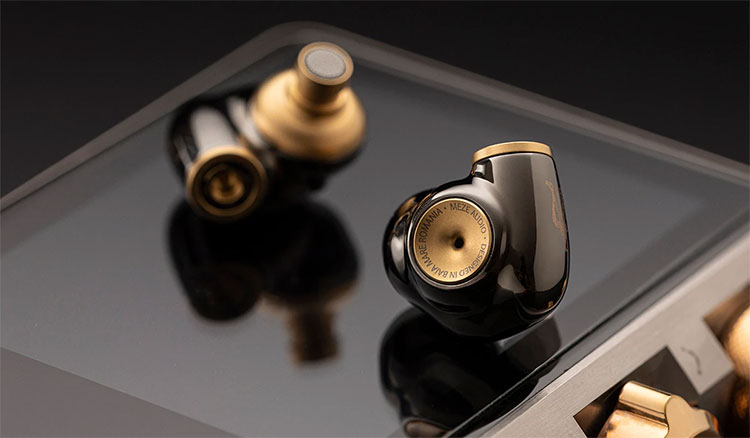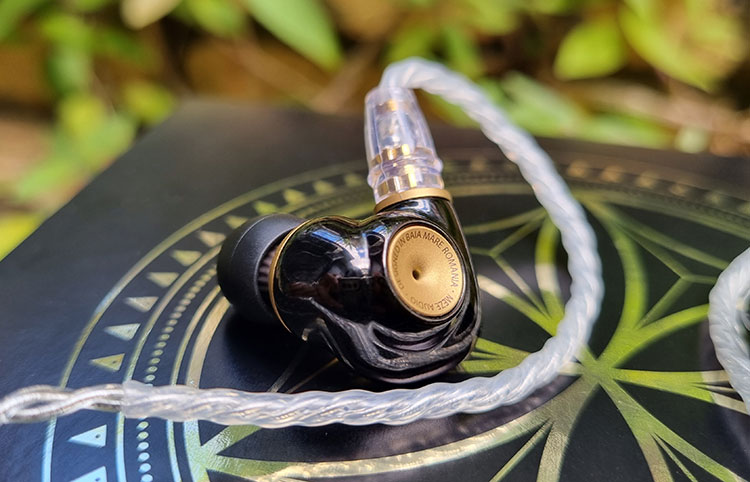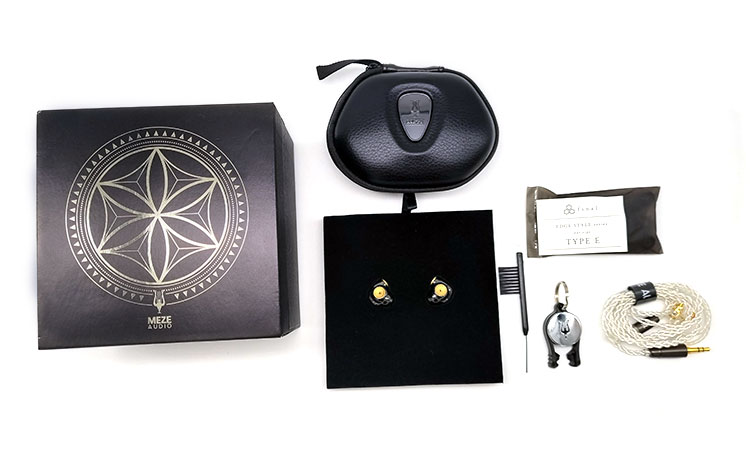This review covers the new and beautifully designed Meze Audio Advar which is a single 10.2 mm dynamic driver universal IEM. It is priced at $699.
Disclaimer: This was sent to us as a sample for our honest opinion. Headfonics is an independent website with no affiliate links or services. We thank Meze for this opportunity.
To learn more about Meze Audio products previously on Headfonics you can click here.
Note, that this article follows our latest scoring guidelines which you can read up on here.
Meze Audio is no stranger in the global audiophile arena. Established in 2011, Meze Audio was first founded by prolific designer cum engineer, Antonio Meze, in Baia Mare, Romania.
As a mainstay in the burgeoning porta-audio marketplace, Meze Audio has made it its sole mission to manufacture and design exemplary products that epitomize both sound and feel.
From their iconic but affordable Meze 99 Classics to the summit-fi Meze Empyrean and Elite, the design house’s extensive portfolio caters to a broad range of budgets, leaving no audio enthusiast behind.
While their headphone division has bedazzled ardent audiophiles across the world, their previous IEM releases have been overshadowed by the former’s spotlight. While it is worth noting the laudations that their flagship Rai Penta and Solo have enjoyed in the last decade, they haven’t quite replicated the breakthrough successes of their headphone releases.
Perhaps the third time’s a charm, with their latest offering, the Meze Advar. Priced at $699, the Meze Advar houses a single dynamic driver; a classic topology that is enjoying a renaissance-like revival as the market shifts towards the more prevalent multi-driver setups we see today.
Tech Inside
Meze Audio has been tight-lipped about disclosing the dynamic driver’s membrane material. What we do know is that its full-range dynamic drivers are 10.2mm each, with a mechanical impedance of 31Ω and a frequency response of 10Hz- 30kHz.
To surmise, the Advar is shrouded in mystery and mystique. Tangibly, there is nothing much to discuss specifications-wise, but Meze Audio’s approach to advertising is akin to Noble Audio’s classic Savant, an IEM with an undisclosed number of balanced armatures during its initial release.

Design
Proudly built and assembled in Romania, the Advar is a robust IEM that exudes an artisanal quality comparable to the cult-favorite, Campfire Audio.
Opting for the ubiquitous MMCX standard, the Advar’s sockets feel and appear stronger than your run-of-the-mill MMCX connectors from substantially cheaper offerings. The seam between the nozzle and the shell appears to be the only potential point of failure.
Regardless, the Advar’s heft inspires confidence in its durability and longevity, seemingly impervious to the rigors of hard-wearing, daily life.
The Advar’s color palette offers a visually striking contrast between glitter-gold and gossamer-black. Regal in appearance, the glossy, gossamer black PVD coating that blankets each shell is expertly applied, with zero surface imperfections or blemishes.
Gold embellishments adorn each respective shell in the following sections of the Advar: the rim around the MMCX connector, the nozzle, the depressed funnel surrounding the vent, and the Meze logo.
The funnel-shaped depression surrounding the vent, and the gold nozzles on each shell enjoy a bead-blasted, satin finish; a tasteful juxtaposition from the lacquer-like finish decorating the rest of the Advar.
The attention to detail here is quite astonishing. The miniature typeface that emblazons the rim of each MMCX connector is legible and consistently finished, a testament to Meze Audio’s pedantic knack for detail. Hence, the Advar is a bespoke product with a quality control commensurate with its sub-$1000 price bracket.
Comfort and Isolation
The contours that form the Advar are meant to mimic the natural rounded surfaces of raw hematite. Meze Audio purports that its organic profile ensures its listeners enjoy pain-free listening sessions for hours on end.
Thankfully, the Advar’s comfort lives up to its lofty promises. The gentle curves of the shells’ profiles rest comfortably against the outer ear canal with negligible discomfort. Comparatively, the Advar’s shells sit flush in the ear canals, tautly seated in place; tight enough to avoid being displaced from the ears from sudden kneejerk movements.
The Advar’s nozzles are of medium length, with a tiny pinhole-sized vent discretely situated below them. As mentioned earlier, the funnel-shaped depression on each shell also houses a prominent vent.
Despite the more-than-modest inclusion of two vents, isolation performs better than average in environments plagued by substantial surrounding noise (wind, passing cars, etc.). In fact, Advar’s isolating capabilities rival some of its balanced-armature exclusive counterparts.
Stock Cable
The included stock cable is a 4-braid silver-plated copper cable terminated in an unbalanced 3.5mm gold-plated jack. Meze Audio’s signature typeface logo graces both the termination and the Y-split, with a small piece of translucent rubber acting as the chin-slider. The strain reliefs near the chin-slider and the point-of-termination feel more than adequate.
The transparent sheathing used for the cables is surprisingly supple and easy to grip. Because of its above-average malleability, any kinks or bends are of no concern. Hence, stowing away the cables in the included hard case is an effortless endeavor. Above all, the Advar’s cables are featherlight, its presence barely noticed during lengthy listening sessions.
While many fervent fans absolutely despise the use of memory wire, Advar’s conservative inclusion of memory wire ensures the ultralight cable remains snugly seated at the back of one’s earlobes.
Overall, Advar’s cables are thoughtfully designed, balancing both form and function.
Package and Accessories
The Advar’s package showcases Meze Audio’s pedigree for elegant and graceful design. The Advar’s come packaged in a monolithic, black cardboard box.
The gold Mandela-like pattern that’s embossed into it was inspired by the forests that inhabit the Maramures region in Northern Romania. The exact pattern can be found on the top of the box albeit in glossy black.
Upon further inspection, the box itself is actually quite spartan. The Advar themselves are encased in a large farm window. Lift it up, and you’ll be greeted by Meze’s iconic leather hard case. Inside the case, you’ll find a set of Final Audio silicon tips (S, M, and L), a Meze-branded MMCX removal tool with a keyring, and the cables as discussed above.
With the Advar’s erring into the kilo buck territory, the Advar’s package and accessories are an accurate reflection of its price point. However, Meze Audio’s MMCX removal tool is a welcomed addition that other brands or manufacturers should consider including in future packages.
Sound Impressions
Summary
Frequency response-wise, the Advar’s sonic profile epitomizes a moderate W-shaped signature, with a modest emphasis on the upper-mid to high range, a lightly scooped lower-midrange, and a pronounced low-end.
The seamless transition between lower-to-upper midrange is reminiscent of the Meze Audio Classics 99, albeit condensed into the miniaturized form factor of an IEM chassis.
The final product is a highly dynamic, and naturally engaging earphone with an ultra-conservative treble roll-off that dissipates any tail-end sibilance on sharp peaks. But its treble response has a splashy-like decay, resulting in a porous sound that could either be seen as a bane or a boon, depending on the track being replayed.
What makes the Advar wholly unique is its technical proficiency. Despite its bombastic mid-bass punch and stage-like sub-bass, the entire mid-band manages to remain unclouded from its assertive low-end.
Surprisingly, bass notes are complex, allowing for multiple layers of instrumentation to retain texture and a body whilst remaining discernible. The Advar’s reproduction of treble-heavy snare strikes and explosive bass notes are lifelike, as they are domineering.
Vocals take second priority in Advar’s perceived stage, but vocal lines still display excellent comprehension, even with genres mired by a cacophony of noise such as black metal.
Timbre
The Advar’s timbre straddles between tube-like warmth in the low to lower mids and a commanding presence in the upper-mids to the higher-mids section of the frequency band.
What results is a pseudo-V-like sound signature that favors clarity and precision in the upper bands, and a meaty mid-bass kick. Moreover, the intangible qualities of a standard, single dynamic driver topology add fullness to the sound vis-à-vis the slightly sterile nature of other transducer variations.
In practice, instruments such as electric guitars, horn sections, and high PRaT synthesizers have enough sizzle, bite, or forwardness without the accompanying note hissing or treble glare.
Conversely, the Advar’s low end remains coherent, with planar-like bass tones that do little to mask the upper sections of the frequency band. Acoustic bass passages in complex, bebop tracks are excellently replicated, remaining highly responsive to subtle changes in note weight and intensity.
Overall, the Advar’s fundamental timbre is traditionally warm, complemented by some very good resolution.
Staging and Dynamics
The Advar’s sound stage is not a stereotypical out-of-head experience. What you get here is a marginally wide L-R stage that is to be expected with IEMs populating this price bracket.
Comparatively, Z-axis performance within the moderately wide stage is noteworthy, with instruments presented excellently within the perceived distance between the front and back end of the ear.
On the other hand, Advar’s imaging displays commendable instrument and vocal separation for a single dynamic driver earphone. Relative to its center image, audible cues (instruments, vocals) are easily discerned or picked up on.
Even with fast-sounding tracks populated by a large group of instruments and singers, the imaging prowess allows the listener to dissect, and hone in on specific artifacts without resistance.
The imagined distance between instruments or vocals on the virtual stage is conveyed accurately, and uncolored. Thus, Advar’s image is one that presents depth, distance, and space remarkably well for its price.
As alluded to earlier, the macro-dynamic capabilities are immediate and authoritative in their unapologetically W-shaped sound signature. Sharp crescendos or sudden changes in amplitude are presented in a grand fashion.
While the Advar’s micro-dynamic performance is not quite up to par with its macro-dynamic resolution, minuscule shifts in volume or sonic artifacts in the stage are still present, albeit not as clear or perceivable.






